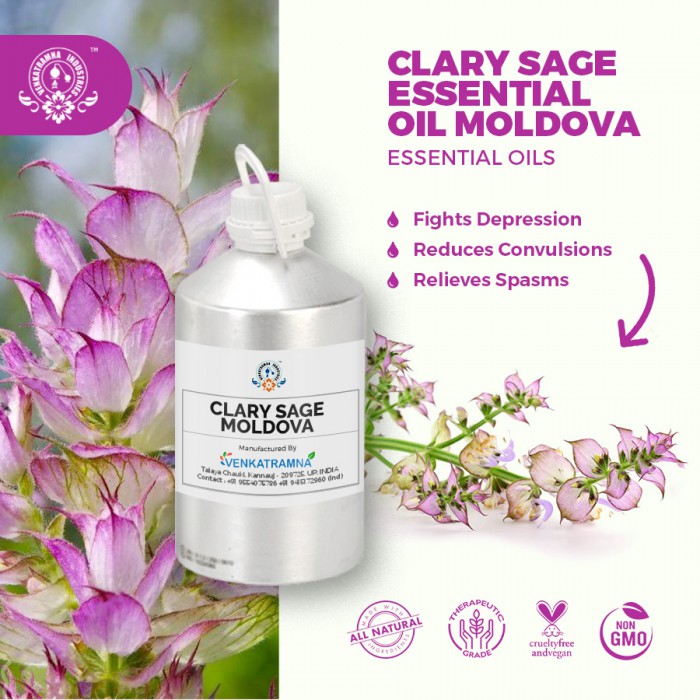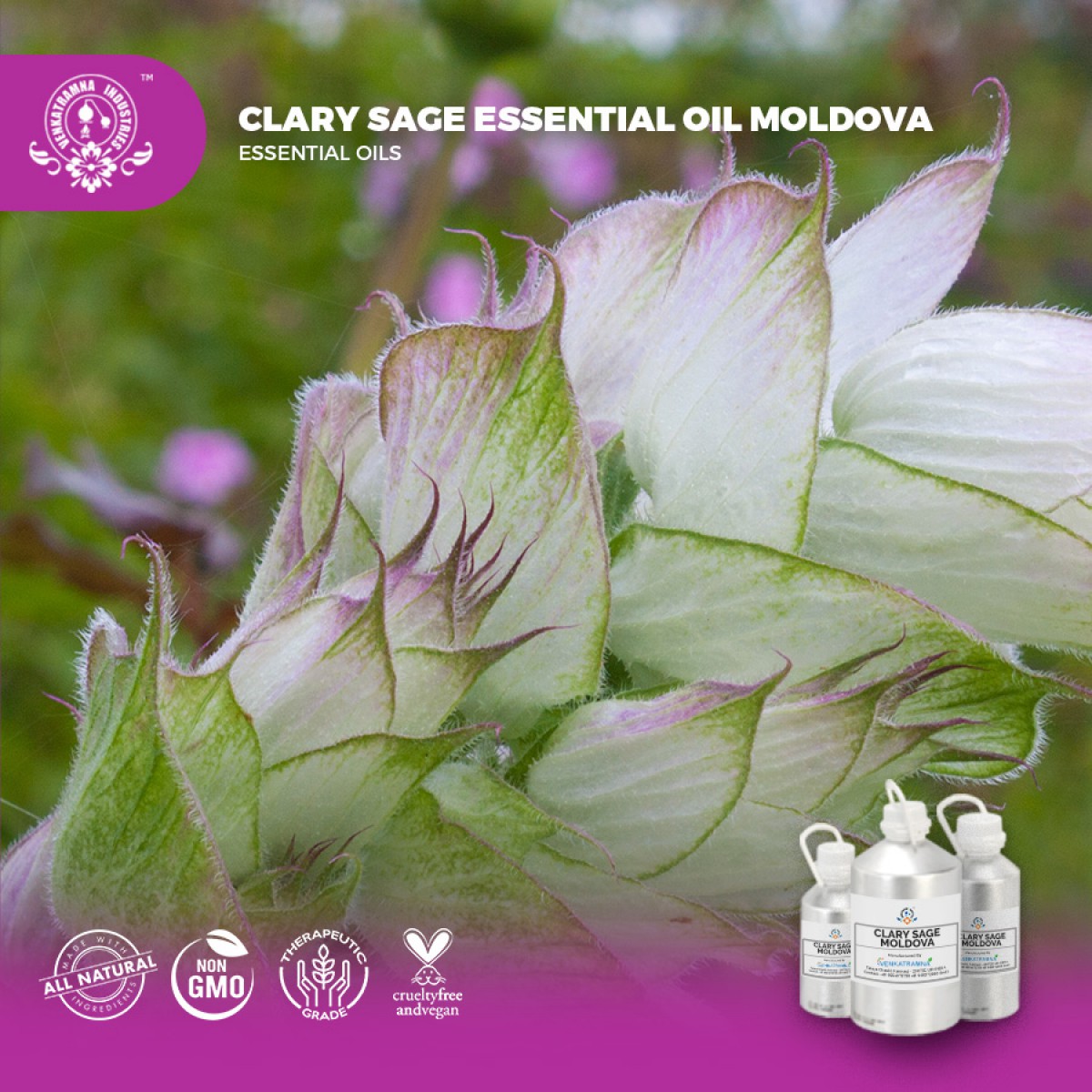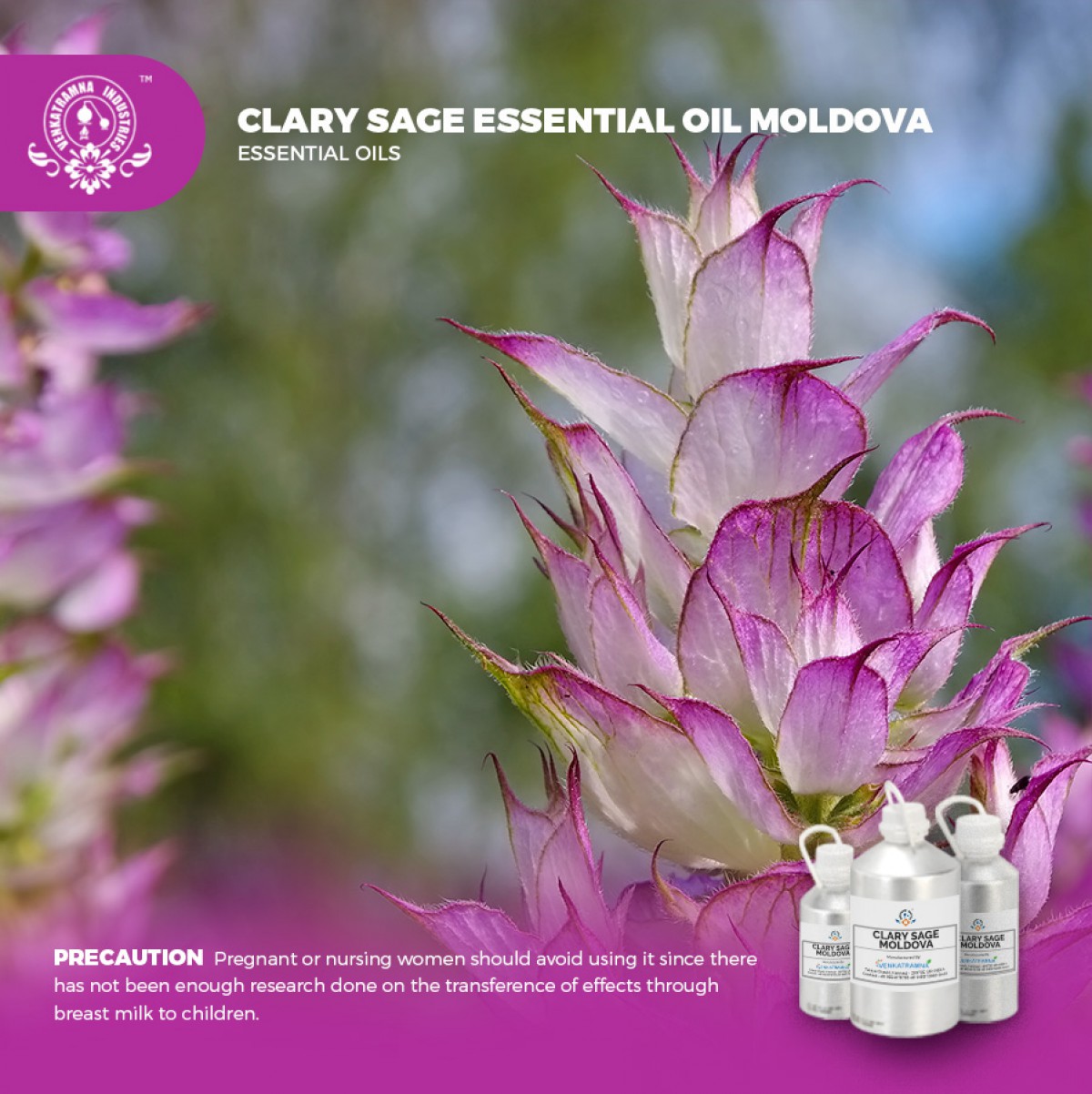Botanical Name: Salvia sclarea L. Common name: Clary, Europe sage, Clary Sage Read More
|
Botanical Name: |
Salvia sclarea L. |
|
Common name: |
Clary, Europe sage, Clary Sage |
|
Plant family: |
Lamiaceae |
|
Genus: |
Salvia |
|
Appearance/Color: |
A thin colorless to yellow-brown, often pale yellow clear
thin liquid. |
|
Odor: |
A middle note of medium aroma, clary sage essential oil has a
herbaceous with sweet, floral aroma. |
|
Blends With: |
Bergamot, Cedar wood, Chamomile German, Chamomile Roman,
Jasmine, Lavender, Neroli, Orange, Rosewood, Sandalwood and Ylang - Ylang. |
|
Origin |
Maldova |
Clary sage (Salvia sclarea L.) is native to Southern Europe and is cultivated worldwide, as ornamental, as well as essential oil bearing plant. Clary sage is well known for its high value essential oil, widely used in perfumery. Besides, the oil possesses high biological activity and because of that is used against stress, tension, depression, insomnia, etc. However, traditionally clary sage oil was used an agent against gingivitis, stomatitis and aphthae. Apart of that, recent studies reported analgesic, anti-inflammatory, antimicrobial, antidiabetic and cytotoxic effects. Studies on clary sage seed fatty oil show that it is a good source of edible oil rich in omega 3-linoleic acid. Clary sage is also used in alcoholic beverages, as well as in tobacco industry. Novel investigations indicated that clary sage have great potential in agriculture because of phytoremediation, allelopathic and insecticidal properties.
DISCLAIMER
The complete range of conditions
or methods of use are beyond our control therefore we do not assume any
responsibility and expressly disclaim any liability for any use of this
product. Information contained herein is believed to be true and accurate however,
all statements or suggestions are made without warranty, expressed or implied,
regarding accuracy of the information, the hazards connected with the use of
the material or the results to be obtained from the use thereof. Compliance
with all applicable federal, state, and local laws and local regulations
remains the responsibility of the user.
The FDA has not evaluated the
statements on this website. No claims are made by Venkatramna Industries as to
the medicinal value of any products from vriaroma.com or by us. The information
presented here is for educating our customers about the traditional uses of
essential oils and is not intended to diagnose, treat, cure, or prevent any
disease. You are responsible for understanding the safe application of these products.
If you have any questions, please call or email us for further information.
As per NAHA guidelines, New Directions Aromatics
(NDA) does not recommend the ingestion of essential oils. It is imperative to
consult a medical practitioner before using Essential Oils for therapeutic
purposes. Pregnant and nursing women and those taking prescription drugs are
especially advised not to use this product without the medical advice of a
physician. The oil should always be stored in an area that is inaccessible to
children, especially those under the age of 7.
Salvia is well known in
traditional medicine as having antimicrobial properties, it being therefore
used as antiseptic, anti-scabies,
anti-syphilis, and anti-inflammatory agent, and frequently used in skin and eye diseases. In some regions of
the Middle East, salvia was reported to be used in treating fever and some digestive
diseases. The antibacterial
properties of the
salvia oil have
been attributed to the
presence of cineole, thujone and camphor.
Clary Sage Essential Oil in
Pharma
Oil is extracted from the leaves
of the Field Mint or Pudina plants using the steam distillation process. The
pale yellow essential oil has a bitter-sweet minty aroma. The principal
constituents of this oil include Camphene, Menthol, Menthone, Neomenthol,
l-menthol, Pinene and Limonene. This oil is used for various medicinal
purposes; however, it is not use in homeopathic treatments. The Mint leaves can
work as blood cleanser with their antibacterial and antiseptic properties. It
can alleviate mouth ulcers, toothache and swollen gum. Fresh leaves can cure
headache and dizziness. Mint leaves can relief arthritis and joint pains. The
leaf infusion helps in curing health disorders like dysmenorrheal, stomachache
and diuresis. These plants have antispasmodic and anesthetic properties. Having
expectorant properties makes it beneficial for cough, cold, sore throat and
fever. The oil extraction of these plants cures various skin problems like
acne, ulcer and boils. The oil is beneficial for the nervous system.
Essence of Clary Sage
Essential Oil
Clary sage is easy to grow in
high-temperature areas. It’s usually cultivated for its use as a flavoring in
tea. It’s also known by the names “clear eye” and “eye bright” because of its
traditional use as a treatment for eye health. But it’s now being studied for a
variety of other health benefits. The essential oil that’s extracted from the
leaves and buds of the plant has a clean, refreshing scent that can be used as
a skin balm or gently inhale as part of an aromatherapy treatment.
COMMON USAGE
·
Fights depression
·
Reduces convulsions
·
Relieves spasms
·
Prevents bacterial infections
·
Prevents infections
·
Stimulates sexual desires
·
Prevents hair loss
·
Skin care
·
Regulates menstruation
·
Lowers blood pressure
·
Acts as a nervine
·
Reduces stomach disorders
Ingredients:
|
S.No |
Key Constituents |
Strength (%) |
|
1 |
Linalyl acetate |
71.5 |
|
2 |
Linalool |
9.5 |
|
3 |
Germacrene D |
10.1 |
|
4 |
sclareol |
1.4 |
|
5 |
b-caryophyllene |
1.5 |
|
6 |
a-copaene |
01.1 |
|
7 |
Bicyclogermacrene |
10.1 |
TOXICOLOGICAL
INFORMATION
Safety Summary
·
Hazards: skin sensitization (moderate
risk).
·
Contraindications: Not known.
·
Maximum dermal use level 0.22%
Organ Specific Effects
·
Adverse skin reactions: Tested at 2, 8
and 10% on 25 volunteers with a previous history of reaction to fragrance
materials, clary sage absolute produced allergic reactions in five, seven and
seven individuals, respectively. In this high-risk group, 0.22% was the
concentration at which any observable reaction disappears.
Systemic Effects
·
Acute toxicity: No information found.
Linalyl acetate is nontoxic.
·
Carcinogenic/anticarcinogenic potential:
No information! found for clary sage absolute, but it contains no known
carcinogens. Sclareol has demonstrated anticarcinogenic activity.
·
Skin corrosion/irritation: May be
irritating to skin.
·
Serious eye damage/irritation: May be
irritating to eyes. Prompt rinsing and removal of the substance will avoid
damage.
·
Respiratory sensitization: Not applicable
under normal use.
·
Germ cell mutagenicity: Not specified
·
Reproductive toxicity: Not specified
·
STOT-single exposure: Not specified
·
STOT-related exposure: Not specified
ECOLOGICAL
INFORMATION
·
Toxicity No additional data available.
·
Bioaccumulation Potential No additional data
available.
·
Persistence & Biodegradability No additional
data available.
·
PBT Assessment Results No additional data
available
·
Bio-accumulative potential Bioaccumulation is
unlikely
·
Mobility in soil Unknown
Do not discharge into the
environment, especially not into waterways, sewers and the environment.





 MSDS-Clarysage2.pdf
MSDS-Clarysage2.pdf




